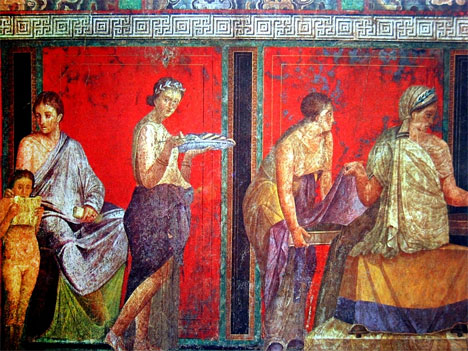True Glory
Paul understood God’s ways. God’s ways are “Covenant-shaped,” they concern transformation, and the glory always comes at the end. It is the result of God’s Word going out and coming back with something good, His own goodness multiplied.
Paul understood God’s ways. God’s ways are “Covenant-shaped,” they concern transformation, and the glory always comes at the end. It is the result of God’s Word going out and coming back with something good, His own goodness multiplied.
The book is currently with the editor for a polish and will be available soon. Here’s a unique review from Steven Opp, who is actually quoted in the book, but don’t let his bias deter you. I still reckon the literary “riffs” are the Apostle Paul’s, not mine, so imagine it’s Paul up there on stage with a “drumitar” and a heart full of jazz.
Several years ago I went with my brother Ryan to see Béla Fleck and the Flecktones in concert. They are an instrumental fusion band consisting of a banjo, sax, bass, and “drumitar” (if you donʼt know what a drumitar is, go on youtube and find out!) As we waited for the curtains to open, I asked Ryan if he knew what songs theyʼd be playing. He said they would do some of their hits but that it would probably morph into a jam session. But not just any jam session. We would witness some of the worldʼs best jazz and bluegrass artists come together and just have some fun. “The truth is,” he said,“weʼre basically going to watch four really talented guys get on stage and play with their toys for a couple hours.” As the night unfolded, I realized he was right. And it was a great concert!
My Federal Vision friends believe baptism is an important subject, from both theological and pastoral points of view. I agree, but for me it is also an issue of aesthetics. The Bible has a wonderfully consistent internal logic, and paedobaptism crunches the gears at every turn.
Peter Leithart just posted something concerning baptism, and it’s worth answering, not only “because somebody on the internet is wrong,” but also because it is an issue I’ve just finished dealing with in The Shape of Galatians. It should be noted that Trinity House is hosting some lectures on sacraments by a baptist, so Dr Leithart and his colleagues have a spirit that should be imitated by theologians everywhere. My own posts here are always bait in the hope of a bite, a friendly disputatio, so don’t take them the wrong way. If a friend has soup on his tie, or wax in his ear, or a fertility rite in his sacrament, what sort of friend isn’t going to point it out!?
Here’s a new book based on the recent series of blog posts on the structure of Galatians. They’ve been worked over thoroughly, with a fair amount of helpful material (introduction, appendixes and some diagrams) added. Find out what Paul meant by “large letters” written with his own hand, how he subtly refers to the Levitical offerings, and why he structured the epistle like a ziggurat.
“Sanctions corresponds to the Day of Atonement. One goat goes to heaven (as fragrant smoke) and the other goes to hell, carrying the sins of the people into the wilderness, to be eaten by the birds and beasts. The difference here is that we have not two goats, but two High Priests…”
The fourth major cycle moves us from the Covenant Ethics to the Covenant Sanctions. This concerns the pouring out of blessings and curses for obedience or disobedience to the Covenant, and the cleansing of the Land from the guilt of sin and the ensuing barrenness.
Aligning this pattern with its corrupted prototype in Eden, the “war of words” between Adam (Jesus) and the serpent (the Jewish rulers) is over, and it is time for some face to face combat, and a reckoning.
Continue reading
“A stone would be rejected by builders because it was ‘unhewn,’ like an Altar stone. But priestly submission was the only possible foundation for the perfectly chiseled stones of Israel’s temples, including the one still taking shape as Jesus spoke these words.”
The third cycle moves us from the “Exodus” of Jesus and His ministry to the threshing of Israel under His new Law. His growing influence among the people (Hierarchy) brings Him into conflict with the authorities (Ethics).
“John was not a court prophet but a man in skins, like Adam, representing both the goodness (covering) and severity (death) of God. John’s food and shelter, like his ministry, came directly from God, and was not the result of the wisdom of men.”
The theme of the second major cycle of Matthew is the Hierarchy phase of the Covenant, which concerns the delegation of authority. This section contains seven cycles, a complete “week.” Identification of the structure answers some interesting questions concerning Jesus’ directives.
I guess this series should be called “A Structure of Matthew,” since there are so many interesting resources available. But of course, as usual, I reckon everyone else is wrong because the Bible Matrix is “the killer hermeneutic.” Ha! See what you think.
 Part III – The Feast of Clouds
Part III – The Feast of Clouds“But Peter said, ‘I have no silver and gold, but what I do have I give to you.”’ (Acts 3:6)
Israel consistently failed to keep the final feast, the Feast of Sukkot, because she took her calling to be elitist rather than priestly. She thought her calling, gifts and purification were for herself, rather than for the healing of the nations.
Who are the dogs and pigs whom Jesus warns His hearers against in Matthew 7?
[This post has been refined and included in Sweet Counsel: Essays to Brighten the Eyes.]
Continue reading